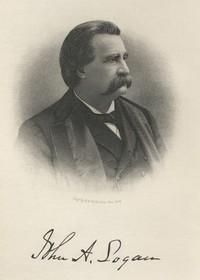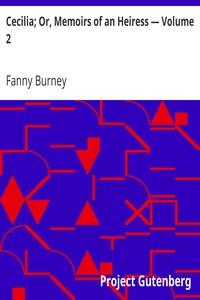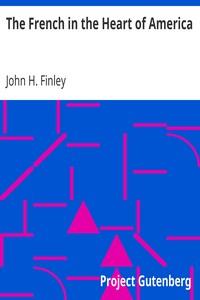Read this ebook for free! No credit card needed, absolutely nothing to pay.
Words: 14798 in 4 pages
This is an ebook sharing website. You can read the uploaded ebooks for free here. No credit cards needed, nothing to pay. If you want to own a digital copy of the ebook, or want to read offline with your favorite ebook-reader, then you can choose to buy and download the ebook.
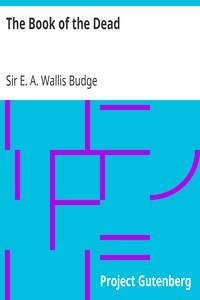

: The Book of the Dead by Budge E A Wallis Ernest Alfred Wallis Sir - Egypt Religion; Death; Future life; Book of the dead
Edition: 10
THE BOOK OF THE DEAD.
by E. A. Wallis Budge.
The Title.
"Book of the Dead" is the title now commonly given to the great collection of funerary texts which the ancient Egyptian scribes composed for the benefit of the dead. These consist of spells and incantations, hymns and litanies, magical formulae and names, words of power and prayers, and they are found cut or painted on walls of pyramids and tombs, and painted on coffins and sarcophagi and rolls of papyri. The title "Book of the Dead" is somewhat unsatisfactory and misleading, for the texts neither form a connected work nor belong to one period; they are miscellaneous in character, and tell us nothing about the lives and works of the dead with whom they were buried. Moreover, the Egyptians possessed many funerary works that might rightly be called "Books of the Dead," but none of them bore a name that could be translated by the title "Book of the Dead." This title was given to the great collection of funerary texts in the first quarter of the nineteenth century by the pioneer Egyptologists, who possessed no exact knowledge of their contents. They were familiar with the rolls of papyrus inscribed in the hieroglyphic and the hieratic character, for copies of several had been published, but the texts in them were short and fragmentary. The publication of the Facsimile of the Papyrus of Peta-Amen-neb-nest-taui by M. Cadet in 1805 made a long hieroglyphic text and numerous coloured vignettes available for study, and the French Egyptologists described it as a copy of the "Rituel Fun?raire" of the ancient Egyptians. Among these was Champollion le Jeune, but later, on his return from Egypt, he and others called it "Le Livre des Morts," "The Book of the Dead," "Das Todtenbuch," etc. These titles are merely translations of the name given by the Egyptian tomb-robbers to every roll of inscribed papyrus which they found with mummies, namely, "Kit?b-al-Mayyit," "Book of the dead man," or "Kit?b al-Mayyitun," "Book of the dead" . These men knew nothing of the contents of such a roll, and all they meant to say was that it was "a dead man's book," and that it was found in his coffin with him.
The Preservation of the Mummified Body in the Tomb by Thoth.
The objects found in the graves of the predynastic Egyptians, i.e., vessels of food, flint knives and other weapons, etc., prove that these early dwellers in the Nile Valley believed in some kind of a future existence. But as the art of writing was, unknown to them their graves contain no inscriptions, and we can only infer from texts of the dynastic period what their ideas about the Other World were. It is clear that they did not consider it of great importance to preserve the dead body in as complete and perfect state as possible, for in many of their graves the heads, hands and feet have been found severed from the trunks and lying at some distance from them. On the other hand, the dynastic Egyptians, either as the result of a difference in religious belief, or under the influence of invaders who had settled in their country, attached supreme importance to the preservation and integrity of the dead body, and they adopted every means known to them to prevent its dismemberment and decay. They cleansed it and embalmed it with drugs, spices and balsams; they anointed it with aromatic oils and preservative fluids; they swathed it in hundreds of yards of linen bandages; and then they sealed it up in a coffin or sarcophagus, which they laid in a chamber hewn in the bowels of the mountain. All these things were done to protect the physical body against damp, dry rot and decay, and against the attacks of moth, beetles, worms and wild animals. But these were not the only enemies of the dead against which precautions had to be taken, for both the mummified body and the spiritual elements which had inhabited it upon earth had to be protected from a multitude of devils and fiends, and from the powers of darkness generally. These powers of evil had hideous and terrifying shapes and forms, and their haunts were well known, for they infested the region through which the road of the dead lay when passing from this world to the Kingdom of Osiris. The "great gods" were afraid of them, and were obliged to protect themselves by the use of spells and magical names, and words of power, which were composed and written down by Thoth. In fact it was believed in very early times in Egypt that Ra the Sun-god owed his continued existence to the possession of a secret name with which Thoth had provided him. And each morning the rising sun was menaced by a fearful monster called Aapep, which lay hidden under the place of sunrise waiting to swallow up the solar disk. It was impossible, even for the Sun-god, to destroy this "Great Devil," but by reciting each morning the powerful spell with which Thoth had provided him he was able to paralyse all Aapep's limbs and to rise upon this world. Since then the "great gods," even though benevolently disposed towards them, were not able to deliver the dead from the devils that lived upon the "bodies, souls, spirits, shadows and hearts of the dead," the Egyptians decided to invoke the aid of Thoth on behalf of their dead and to place them under the protection of his almighty spells. Inspired by Thoth the theologians of ancient Egypt composed a large number of funerary texts which were certainly in general use under the IVth dynasty , and were probably well known under the Ist dynasty, and throughout the whole period of dynastic history Thoth was regarded as the author of the "Book of the Dead."
The Book Per-t em hru, or Coming forth by the Day, commonly called the "Book of the Dead."
Under the rule of the High Priests of Amen many changes were introduced into the contents of the papyri, and the arrangement cf the texts and vignettes of the PER-T EM HRU was altered. The great confraternity of Amen-Ra, the "King of the Gods," felt it to be necessary to emphasize the supremacy of their god, even in the Kingdom of Osiris, and they added many prayers, litanies and hymns to the Sun-god to every selection of the texts from the PER-T EM HRU that was copied on a roll of papyrus for funerary purposes. The greater number of the rolls of this period are short and contain only a few Chapters, e.g., the Papyrus of the Royal Mother Netchemet and the Papyrus of Queen Netchemet . In some the text is very defective and carelessly written, but the coloured vignettes are remarkable for their size and beauty; of this class of roll the finest example is the Papyrus of Anhai . The most interesting of all the rolls that were written during the rule of the Priest-Kings over Upper Egypt is the Papyrus of Princess Nesitanebtashru , now commonly known as the "Greenfield Papyrus." It is the longest and widest funerary papyrus known, for it measures 123 feet by 1 foot 6 1/2 inches, and it contains more Chapters, Hymns, Litanies, Adorations and Homages to the gods than any other roll. The 87 Chapters from the PER-T EM HRU which it contains prove the princess's devotion to the cult of Osiris, and the Hymns to Amen-Ra show that she was able to regard this god and Osiris not as rivals but as two aspects of the same god. She believed that the "hidden" creative power which was materialized in Amen was only another form of the power of procreation, renewed birth and resurrection which was typified by Osiris. The oldest copies of the PER-T EM HRU which we have on papyrus contain a few extracts from other ancient funerary works, such as the "Book of Opening the Mouth," the "Liturgy of Funerary Offerings," and the "Book of the Two Ways." But under the rule of the Priest-Kings the scribes incorporated with the Chapters of the PER-T EM HRU extracts from the "Book of Ami-Tuat" and the "Book of Gates," and several of the vignettes and texts that are found on the walls of the royal tombs of Thebes.
One of the most remarkable texts written at this period is found in the Papyrus of Nesi-Khensu, which is now in the Egyptian Museum in Cairo. This is really the copy of a contract which is declared to have been made between Nesi-Khensu and Amen-Ra, "the holy god, the lord of all the gods." As a reward for the great piety of the queen, and her devotion to the interests of Amen-Ra upon earth, the god undertakes to make her a goddess in his kingdom, to provide her with an estate there in perpetuity and a never-failing supply of offerings, and happiness of heart, soul and body, and the recital upon earth of the "Seventy Songs of Ra" for the benefit of her soul in the Khert-Neter, or Under World. The contract was drawn up in a series of paragraphs in legal phraseology by the priests of Amen, who believed they had the power of making their god do as they pleased when they pleased.
Ancient Egyptian tradition asserts that the Book PER-T EM HRU was used early in the Ist dynasty, and the papyri and coffins of the Roman Period afford evidence that the native Egyptians still accepted all the essential beliefs and doctrines contained in it. During the four thousand years of its existence many additions were made to it, but nothing of importance seems to have been taken away from it. In the space here available it is impossible to describe in detail the various Recensions of this work, viz., the Heliopolitan, the Theban and its various forms, and the Sa?te; but it is proposed to sketch briefly the main facts of the Egyptian Religion which may be deduced from them generally, and especially from the Theban Recension, and to indicate the contents of the principal Chapters. No one papyrus can be cited as a final authority, for no payprus contains all the Chapters, 190 in number, of the Theban Recension, and in no two papyri are the selection and sequence of the Chapters identical, or is the treatment of the vignettes the same.
Thoth, in Egyptian Tchehuti or Tehuti, who has already been mentioned as the author of the texts that form the PER-T EM HRU, or Book of the Dead, was believed by the Egyptians to have been the heart and mind of the Creator, who was in very early times in Egypt called by the natives "Pautti," and by foreigners "Ra." Thoth was also the "tongue" of the Creator, and he at all times voiced the will of the great god, and spoke the words which commanded every being and thing in heaven and in earth to come into existence. His words were almighty and once uttered never remained without effect. He framed the laws by which heaven, earth and all the heavenly bodies are maintained; he ordered the courses of the sun, moon, and stars; he invented drawing and design and the arts, the letters of the alphabet and the art of writing, and the science of mathematics. At a very early period he was called the "scribe of the Great Company of the Gods," and as he kept the celestial register of the words and deeds of men, he was regarded by many generations of Egyptians as the "Recording Angel." He was the inventor of physical and moral Law and became the personification of JUSTICE; and as the Companies of the Gods of Heaven, and Earth, and the Other World appointed him to "weigh the words and deeds" of men, and his verdicts were unalterable, he became more powerful in the Other World than Osiris himself. Osiris owed his triumph over Set in the Great Judgment Hall of the Gods entirely to the skill of Thoth of the "wise mouth" as an Advocate, and to his influence with the gods in heaven. And every follower of Osiris relied upon the advocacy of Thoth to secure his acquittal on the Day of Judgment, and to procure for him an everlasting habitation in the Kingdom of Osiris.
Free books android app tbrJar TBR JAR Read Free books online gutenberg
More posts by @FreeBooks

: Suburban Sketches by Howells William Dean - Short stories; Domestic fiction; Suburban life Fiction
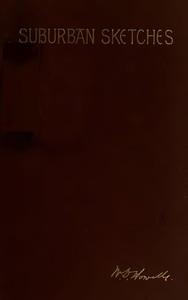

: The Great Conspiracy Complete by Logan John Alexander - United States Politics and government 1861-1865; Slavery United States US Civil War
